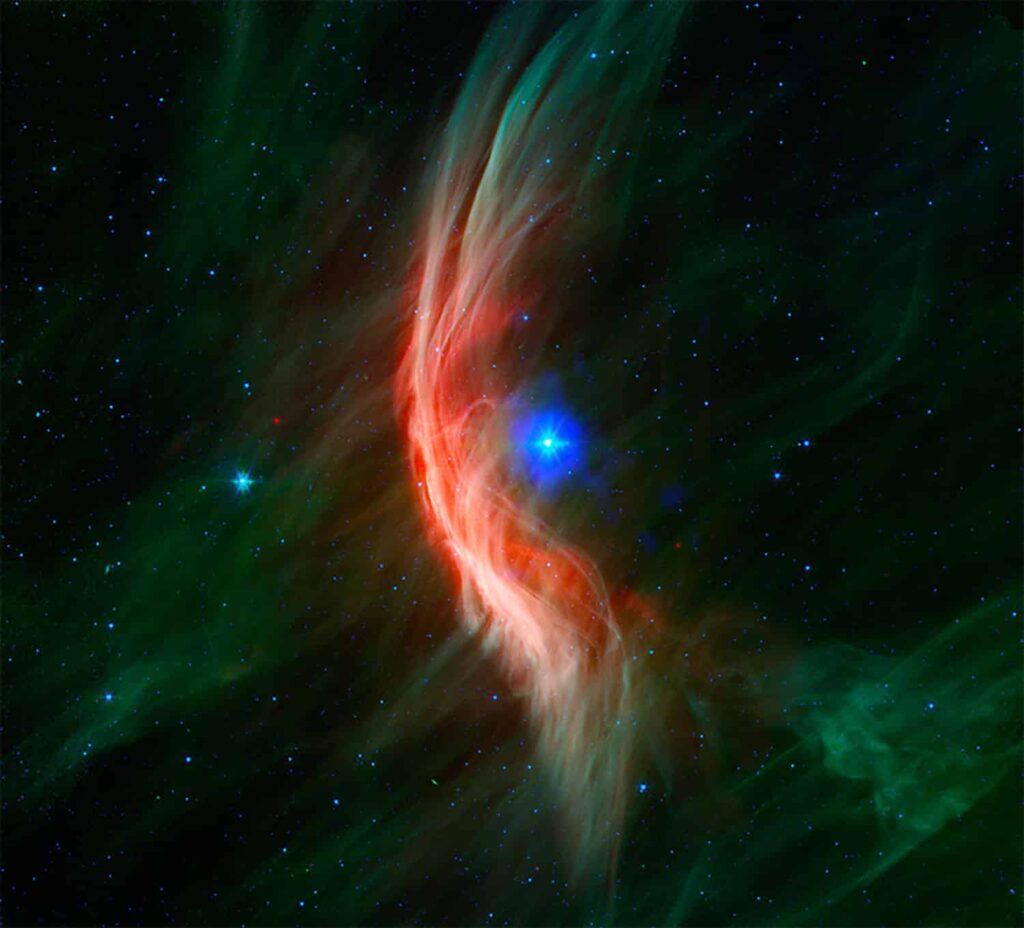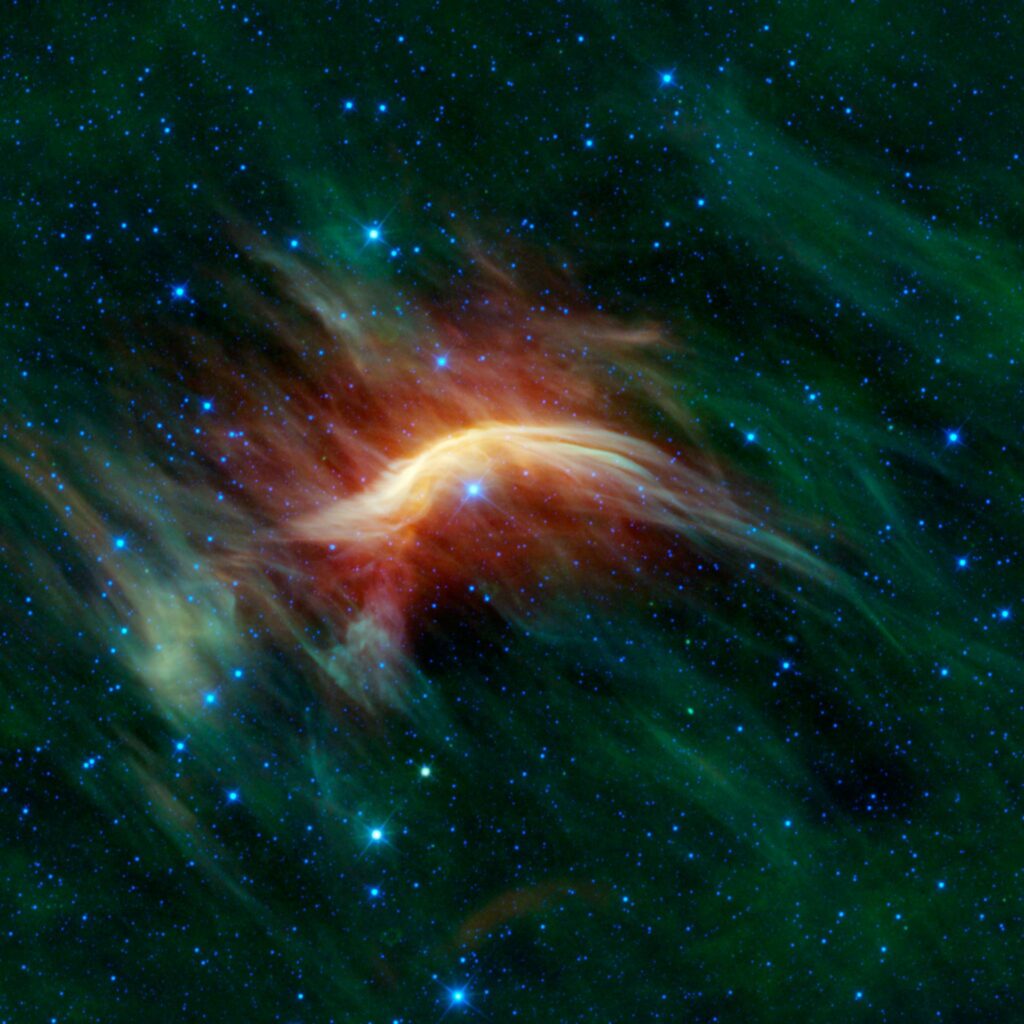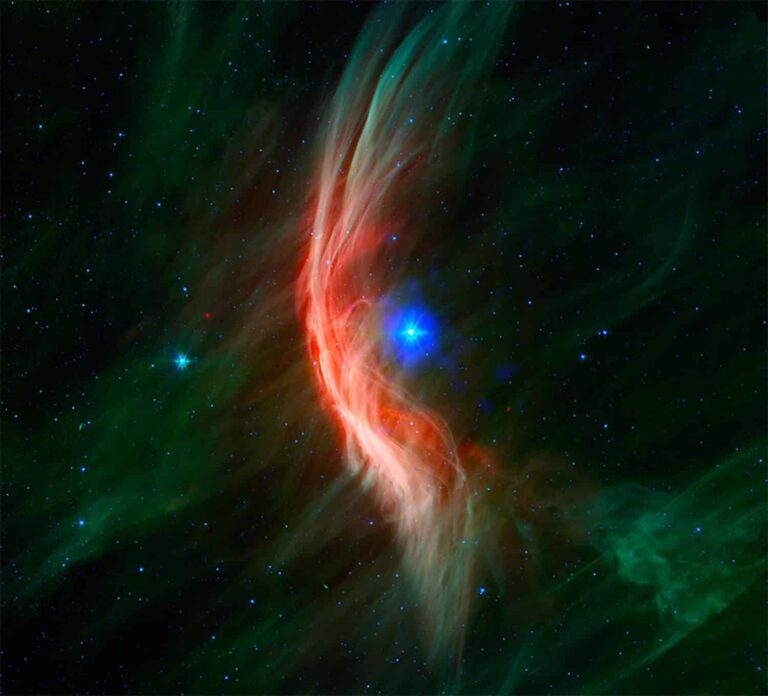NASA Chandra sees the catastrophic past of the Zeta Ophiuchi star
Zeta Ophiuchi, a blazing star around 440 light-years from Earth, had a troubled past. The enormous luminary was likely expelled from its birthplace by a strong supernova explosion. The Zeta Ophiuchi was driven at a speed of roughly 160 thousand km/h by an explosion that occurred about a million years ago, utterly destroying its companion.

More information about the past of this runaway star is revealed through a new simulation produced by NASA’s Chandra X-ray observatory. The newly integrated picture depicts an object thrown off the luminary’s surface colliding with interstellar gas to create a shock wave (red and green). A bubble of X-ray radiation (blue) that surrounds the star, according to Chandra, was produced by gas that was cooked to tens of millions of degrees by a shock wave.
The first thorough computer simulation of a shock wave has been produced by a group of astronomers from the Dublin Institute for Advanced Study in Ireland. This was required to determine how well the models match the X-ray, optical, infrared, and radio wave data.

Computer simulations have discovered a discrepancy with what astronomers have observed. The X-rays in all three simulations were weaker than what was really seen. Two of the three computer models predicted that the X-ray emission should be brighter near the shock wave, but it was strongest closest to the star.
Scientists intend to test more intricate models in the future with added physics, such as the effects of turbulence and particle acceleration. If the alignment with the X-ray data will improve, they are eager to find out.
A remarkable finding was discovered earlier by scientists in a cosmic particle accelerator.
According to Techexplorist
Do not forget to share your opinion with us to provide you with the best posts !




0 Comments